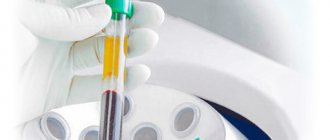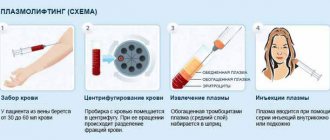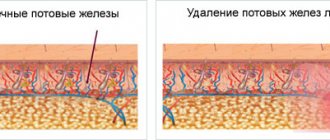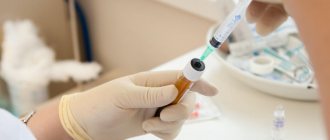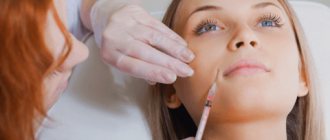Today, given the social and economic situation in the world, many patients are postponing childbearing. This leads to the fact that the average age of women attending assisted reproductive technology clinics is increasing every year. Unfortunately, nature has designed it in such a way that the supply of eggs is not unlimited and naturally decreases after 38 years. The environmental situation and the characteristics of genetic mutations accumulated in the population lead to an increase in the number of women with premature ovarian failure. These are patients who, by the age of 40, already have a reduced ovarian reserve and no menstrual cycle.
Attempts to obtain one's own genetic material (egg) in such situations, unfortunately, are not always successful. “Poor response” in IVF programs is a huge problem in the field of reproductive medicine, and work in such cases becomes psychologically difficult both for the woman herself and for the fertility doctor. Repeated attempts at IVF, unfortunately, may not produce any results. Despite the fact that gonadotropins are now routinely used in clinical practice to stimulate folliculogenesis, in women with low ovarian reserve it is not always possible to obtain a sufficient number of oocytes.
But science does not stand still, and today interesting new options for non-hormonal stimulation of ovarian function have appeared, which we would like to talk about here.
The site administration tries to update the price list in a timely manner, but in order to avoid possible misunderstandings, please check the cost of services on the day of contact by phone: +7 (499) 521-68-70 or at the clinic with the administrators. It is not a public offer agreement.
Cost of services
| Service | Price |
| Treatment with autologous platelet-rich plasma - Intraovarian (PRP in gynecology) (A16.01.026) | 50,000 rub. |
| Treatment with autologous platelet-rich plasma - Intraoperative - intraovarian (PRP in gynecology) (A16.01.026) | 30,000 rub. |
| Diagnostic laparoscopy (including treatment for gynecological pathology) in combination with in vitro activation (IVA) and PRP (A16.30.079) | 170,000 rub. |
| Diagnostic laparoscopy (including treatment for gynecological pathology) in combination with in vitro activation (IVA) (A16.30.079) | 120,000 rub. |
How does plasma therapy work?
Platelets are one of the types of blood cells that have biological characteristics. They not only promote blood clotting, but also contain proteins that can stimulate cell division and thus trigger tissue regeneration. Scientifically speaking, platelets “regulate key mechanisms involved in the healing process, including cell migration, proliferation and angiogenesis.” This property of platelets is used in plasma therapy.
Concentrated platelets introduced into your own body begin to stimulate the growth of new cells - fibroblasts and muscle fibers. An increase in the number of these cells restores damage to the skin and mucous membranes, increasing the elasticity and turgor of the skin.
Who is the procedure recommended for?
The indications for plasma therapy are wide, but there are cases in which this procedure is used more often than other methods. For example, plasma therapy may be recommended for women experiencing discomfort in their intimate lives. If anorgasmia is diagnosed, the procedure improves tissue trophism and makes the G-spot more sensitive.
This option is also relevant for those who use oral contraceptives. By the age of forty, delicate problems appear in the female body, since the production of hormones occurs less actively, the brightness of sensations is lost, and dryness occurs. In addition, the first symptoms of stress urinary incontinence may occur.
Plasma, which is administered during plasma therapy, contains lipids, growth factors, hormones, proteins, amino acids, as well as microelements contained in the blood. Therefore, tissues are successfully rejuvenated and renewed. Plasma therapy can be recommended for women after thirty-eight years of age.
It should be taken into account that plasma therapy in gynecology is a course technique. It takes some time for all the factors to work. Plasma acts in such a way that the body’s own forces are activated, increasing the tone of the muscles of the pelvic floor, solving many problems in the field of gynecology. The patient returns to a normal healthy life.
Indications for intimate plasma lifting
As a rule, gynecologists recommend plasma lifting injections to achieve a therapeutic effect in the complex therapy of inflammatory diseases, as well as as separate procedures for vulvar rejuvenation:
- Inflammatory diseases of the vaginal mucosa, for example, vaginitis;
- Dry mucous membranes due to changes in hormonal status;
- Decreased turgor and elasticity of genital tissues;
- Inflammatory processes of the cervical mucosa;
- Urinary incontinence;
- Correction of defects after unsuccessful surgical interventions or traumatic births;
- Atrophic changes in the skin and mucous membranes of the vagina.
Injections into areas of inflammation or tissue damage with a high concentration of platelets promote cellular renewal and healing.
Plasmolifting in gynecology (autoplasmotherapy)
Plasmolifting in gynecology (autoplasma therapy) is a medical procedure that is used in the treatment of inflammatory diseases of the female reproductive system. The method involves the doctor injecting platelet autoplasma obtained from the patient’s own blood into certain areas.
Under the influence of plasmolifting, the mucous membrane is actively restored if the following diagnoses are present:
- leukoplakia,
- erosion,
- vaginitis,
- krauroses,
- endmetritis
- endocervicitis, etc.
In particular, the procedure will help reduce chafing and cracks, eliminate discomfort and dryness that arise during intimate relationships. Plasmolifting eliminates atrophic colpitis, helps improve local immunity, enhances mucosal regeneration, and at the same time achieves a more pronounced effect than with the use of many drugs. In addition, the patient’s intimate life is rehabilitated, and many other problems are solved.
In Ufa, you can take a course of plasma lifting at the paid clinic "ViroMed"
Benefits of plasma lifting
First of all, I would like to note the safety of exposure. This is explained by the absolute naturalness of the administered product, because only the patient’s own blood is used for its production. In this case, you don’t have to worry about allergies; this is completely excluded. It is equally important that you do not have to wait a long time for results; they can be seen after the first sessions.
Who is the procedure recommended for?
Indications for plasma lifting are wide. For example, plasma lifting can be recommended for women experiencing discomfort in their intimate life. If anorgasmia is diagnosed.
This option is also relevant for those who use oral contraceptives. By the age of forty, delicate problems appear in the female body, since the production of hormones occurs less actively, the brightness of sensations is lost, and dryness occurs. In addition, the first symptoms of stress urinary incontinence may occur.
The plasma that is administered during plasmolifting contains lipids, growth factors, hormones, proteins, amino acids, as well as microelements contained in the blood. Therefore, tissues are successfully rejuvenated and renewed. Plasmolifting can be recommended for women after thirty-eight years of age.
It should be taken into account that plasma lifting in gynecology is a course technique. It takes some time for all the factors to work. Plasma acts in such a way that the body’s own forces are activated, increasing the tone of the muscles of the pelvic floor, solving many problems in the field of gynecology. The patient returns to a normal healthy life.
How does the plasma lifting procedure work?
The day before the procedure, it is necessary to exclude fatty and fried foods from the diet, as well as foods high in preservatives. 4 hours before the procedure, it is recommended to refrain from eating and limit yourself to drinking plenty of fluids.
The entire plasma lifting procedure at the ViroMed clinic is carried out only with certified equipment!
Stages of plasma lifting:
- To obtain platelet-rich plasma intended for subcutaneous and intradermal injections, blood is taken from the patient into a special tube for plasma lifting. Drawing blood is similar to taking a regular intravenous test.
- At the next stage, the blood is purified and placed in a special centrifuge, where it is divided into three fractions: platelet-poor plasma, platelet-rich plasma and red blood cells. The fraction most enriched in activated platelets is selected.
- Next, the resulting plasma is immediately injected into the patient’s dermis according to a certain scheme.
The procedure itself takes about an hour and does not require pain relief (local anesthesia is possible if necessary).
Autoplasmotherapy at the ViroMed clinic in Ufa is:
- Modern treatment methods;
- Strict adherence to the methodology of the procedure;
- Prescribing the procedure in accordance with the indications;
- Noticeable results after the first sessions.
How is plasma lifting done?
The preparation of the drug for injection is carried out in 2 stages. At the first stage, the required amount of venous blood is taken from the patient and placed in a centrifuge, where the platelets are separated from other blood components in the process. At the second stage, platelets are concentrated in the plasma.
The introduction of an enriched drug during intimate plasma lifting can be carried out subcutaneously and intradermally, including the mucous membranes of the vagina, cervix, and vulva. If the pain threshold is low, the injection area can be numbed with an anesthetic spray or gel.
The procedures are carried out in courses. Depending on the individual characteristics of the body, 5 to 10 procedures may be required with a break of several weeks. The effect of therapy is not lifelong. Metabolic processes in the body proceed non-stop, so a repeat course can be carried out after 6-9 months.
Plasmolifting procedure
The essence of the plasma lifting procedure
The process of carrying out this procedure is based on taking plasma from venous blood and its further introduction into the structures of the internal organs of the reproductive system.
Plasma - blood components without red blood cells - a suspension of platelet cells, proteins, minerals and vitamins.
The most important for plasma lifting are platelets, the main function of which is the formation of a platelet plug using the fibrinogen protein.
In short, they are involved in tissue regeneration and hemostasis.
Before the injection is administered into the tissue, a secondary centrifugation of the plasma is performed to increase the concentration of platelets.
Despite the fact that the procedure itself is painless, many specialists play it safe by using a special cream as an anesthetic.
Injections of autoplasma with platelet contents are administered under the skin and under the mucous membrane of organs throughout the entire length of the correction zone of the affected areas of the organ. The interval between injections is about one centimeter. Very thin needles are used for injection, thanks to which pain is reduced to zero.
There are three possible ways to administer autoimmune plasma: superficially, intrauterinely, intravaginally.
IMPORTANT: Patients with a low pain threshold should notify the doctor so that he can administer local anesthesia.
Pre-procedural measures
Before plasma lifting, the patient must undergo a comprehensive examination by a gynecologist, including examination of the vaginal area, taking a smear for flora, and consultation with a specialist. Also, you will need to consult an endocrinologist, take a general and detailed blood test, and test for the presence of the immunodeficiency virus and similar diseases.
“Plasmolifting gel” technique
These surgical procedures are intended to correct defects and imperfections in the genital area.
Nowadays, patients turn to gynecologists not only with diseases and disorders of the reproductive system, but also with problems of violation of the aesthetic beauty of the external genitalia.
This is where gel plasma lifting of the vagina and vulva comes in handy.
Difference with classic plasma lifting
It consists in the fact that the autoimmune platelet contents are transferred to a gel aggregate state. The gel substance passes inside the organ, to the location of the defect, and fills its space. This corrects age-related, aesthetic changes and eliminates genital imperfections.
IMPORTANT: This procedure is not used if a woman has an individual intolerance to Arixtra - an anticoagulant, a direct inhibitor, and also if the woman is pregnant, breastfeeding or has permanent fillers, postpartum injuries.
Indications for the procedure with plasma lifting gel
- Asymmetry of the outer labia;
- Congenital defects or acquired damage to the perineal area;
- Low sensitivity of the clitoris;
- Hypoplasia (underdevelopment), aplasia (lack of formation) of the labia;
- Problems holding urine;
- Hypersensitivity of the urethral membranes;
- Impaired hydration of the vulvar mucosa;
Cumulative effect
How many gynecological plasma lifting procedures need to be done?
The use of plasmolifting procedure in gynecology involves a series of therapeutic measures, consisting of 5 to 10 sessions. The maximum number of injections that can be given at a time in plasma lifting is one.
Injections are given after a week. After completing a whole course of procedures, the result will be maintained for the next two years, after which, in case of relapse of diseases or due to the presence of another reason, it is recommended to repeat it.
Biostimulation of the platelet component of blood plasma activates metabolism in cells, increases the state of immunity in the body, which prevents the development of new or recurrent diseases.
Possible complications, side effects
The development of complications is a rare case during the plasma lifting procedure in gynecology, but despite this, it can occur due to the irresponsible approach of doctors and medical personnel to this procedure.
This may include blood poisoning through poorly treated equipment.
Side effects of plasma lifting are:
- its fragility of the achieved effect;
- increasing sensitivity and tissue density;
- exacerbation of chronic diseases;
- allergy to syringe material or anticoagulant drugs;
Rehabilitation period
In order to achieve the desired result and quick recovery after plasma lifting, you need to follow a number of rules:
Compliance with sexual intercourse in the first days after the procedure;- Avoid using a hot bath or shower;
- Do not use soap-based hygiene products in the perineal area for the first time;
- Refrain from visiting a solarium or tanning.
- Refrain from going to the pool.
Preparation
PRP procedures, although bioavailable and non-rejection free, require preparation. At the consultation, the gynecologist will write out directions for blood tests to identify the level of platelets in the blood, the presence of infectious and inflammatory processes, establish the level of blood clotting, exclude anemia and abnormalities in the composition of the blood. They will take a smear to check the flora and the presence of sexually transmitted diseases. Systemic diseases, oncological diseases, and a tendency to tumors are strict contraindications for plasma lifting.
Autoplasma therapy in gynecology
Sessions are conducted in the first phase of the menstrual cycle. How is plasma lifting done in gynecology? PRP therapy is standard: superficial, intravaginal, intrauterine. After the procedure on the vagina or cervix, sexual rest is required for one to two days. On average, a course is prescribed from 5-10 procedures, the interval between them is 5-7 days, depending on age, indications and individual characteristics of the body.
The technology of the Plasmolifting™ method involves the use of equipment and consumables of LUX quality. In our center we use certified test tubes of the Plasmolifting™ brand, imported centrifuges with established modes and high-quality consumables!
Cost of services
The price of plasma lifting is from 5,000 rubles. session (1 test tube); Plasmolifting of the vagina - 5,500 rubles. session (1 test tube); Plasmolifting of the cervix - 5,500 rubles. (1 test tube). Plasmolifting course in gynecology - 25,000 rubles (5 procedures for 1 tube).
Treatment procedures: list and prices
How and where to do it
If you want to take a plasma lifting course in gynecology in Moscow:
- Make an appointment with a doctor;
- Go through the procedure and schedule subsequent sessions.
today


